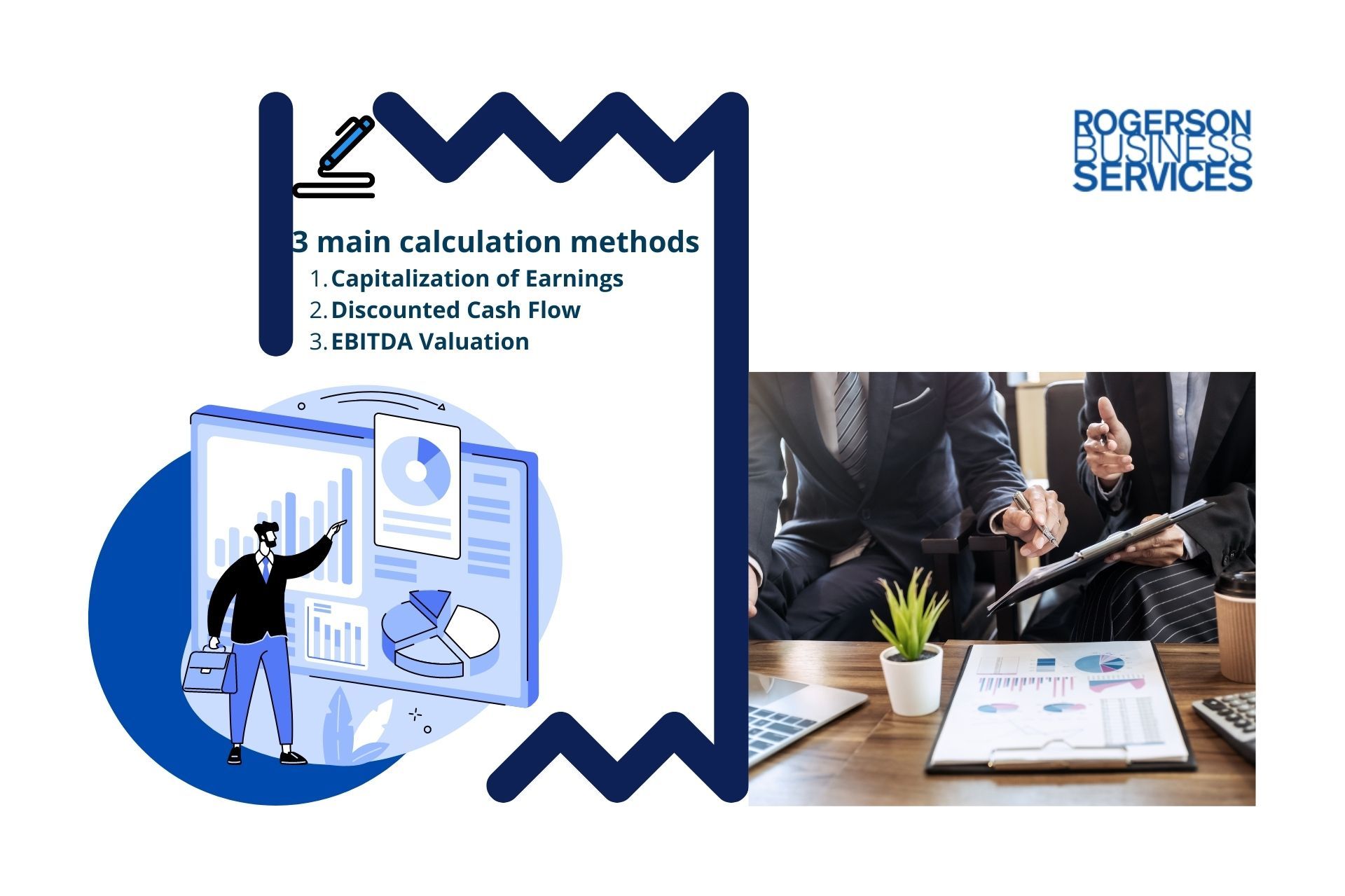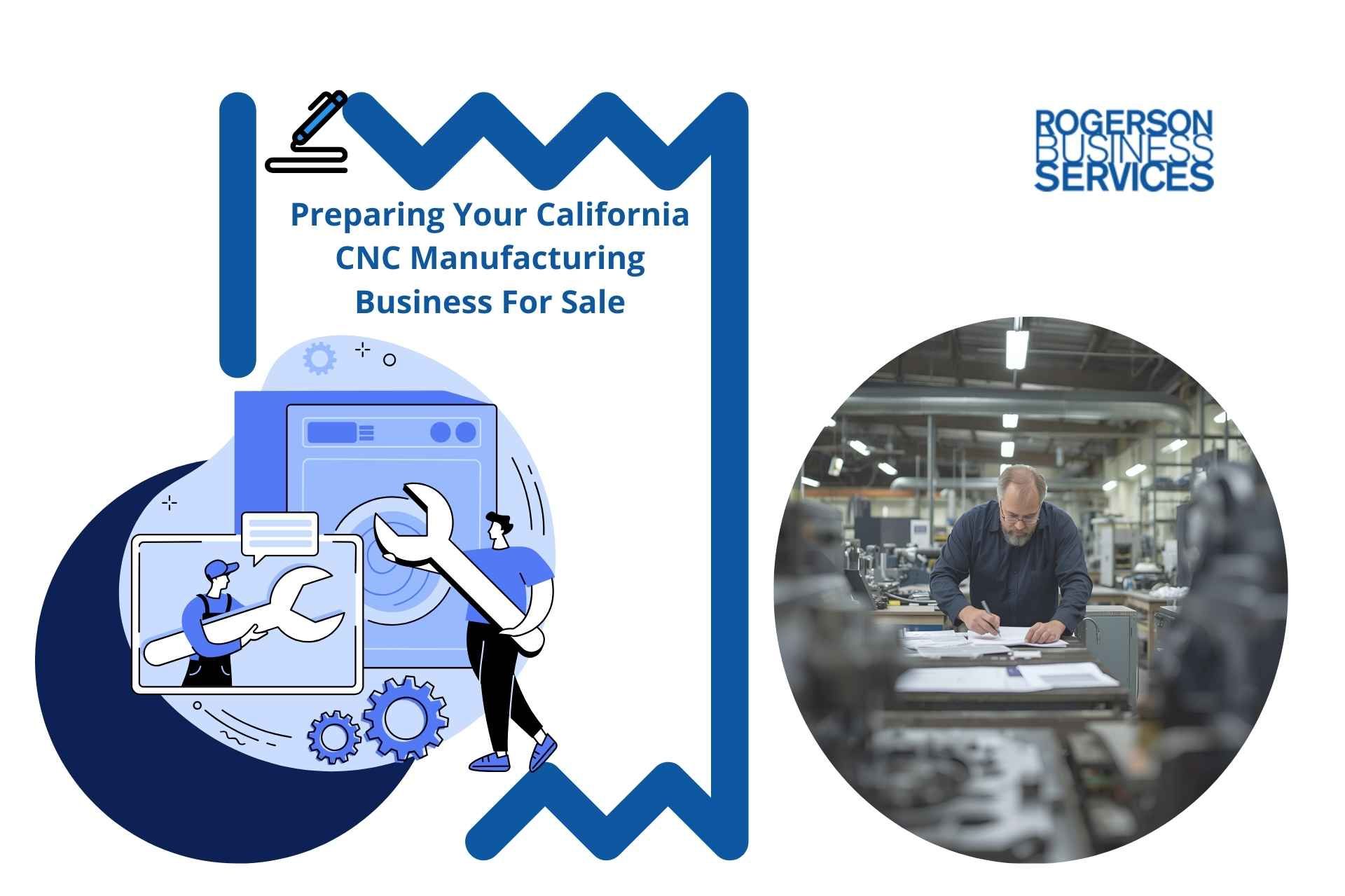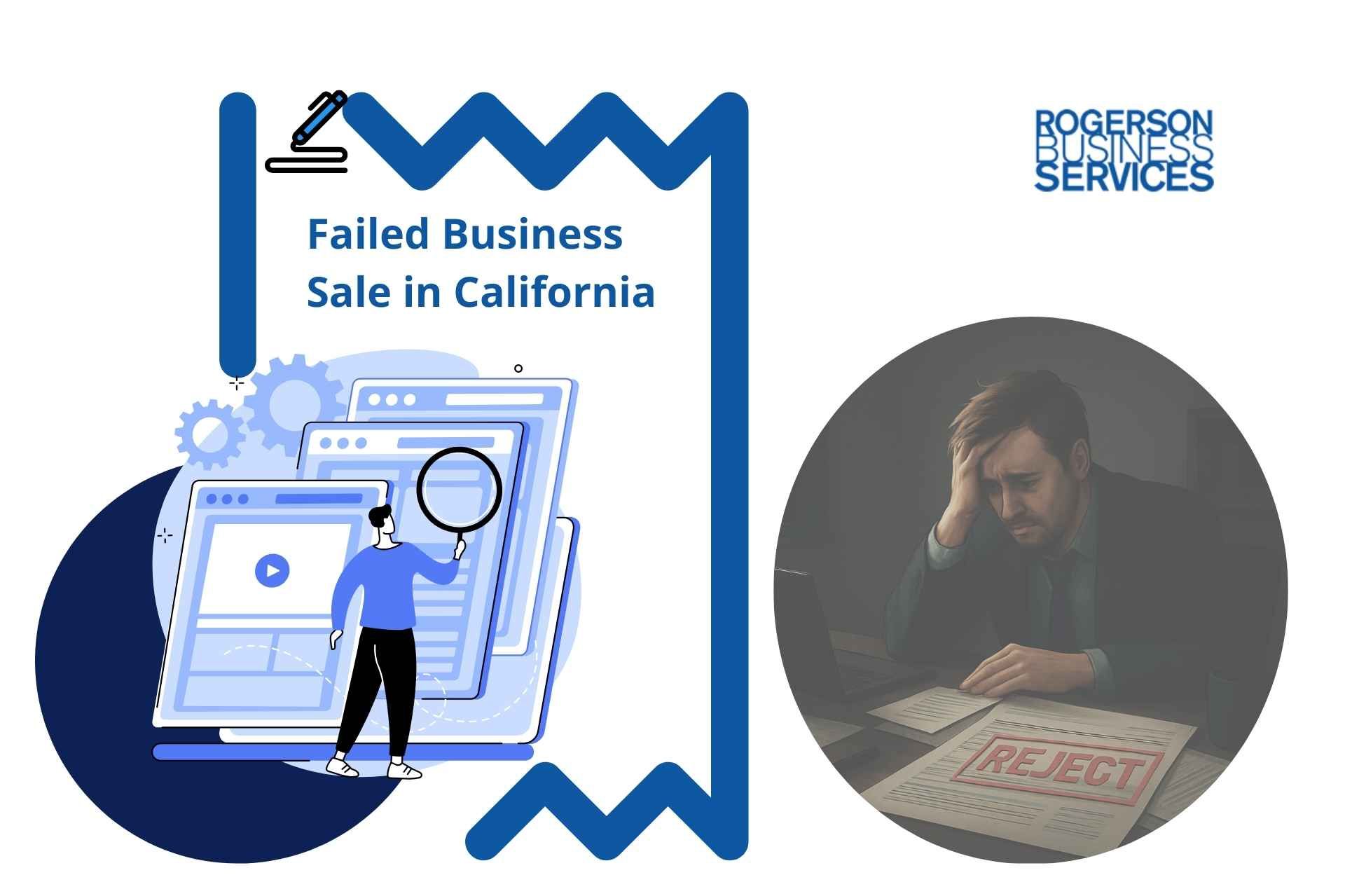Business Valuation Calculator Based On Income In California
Business Valuation Calculator
9 most common and trusted lower middle market business valuation factors:
- Market size
- Traction
- Financing
- Talent potential
- Investor demand
- Clients
- Trade name
- Tangible assets
- The health of the economy

Business valuation calculator to determine your lower middle market business worth in California. We walk you through the three main calculation methods.
- Capitalization of Earnings
- Discounted Cash Flow
- EBITDA Valuation
Revenue is the primary factor that affects how much your company is worth, but accurately estimating a company's worth depends on the size of the business, its management staff, area of expertise, and a variety of other economic and industry specific factors.
Calculating Business Valuation
The most common and trusted business valuation method is the income multiples approach, which aims to compare companies within a niche using broadly applicable financial assessors. Below are nine categories with associated questions that can help you determine the value of your lower middle market business under the income multiples approach:
- Market size: How big is your market? What portion of that market does your business hold?
- Traction: Is your company growing? How is it growing?
- Financing: How much money does it take to maintain your company’s profits?
- Talent potential: Does the business have a pool of skilled talent?
- Investor demand: Is your enterprise a part of a burgeoning industry?
- Clients: Who are your clients? What is the quality of your relationships with them?
- Trade name: What is your company’s reputation?
- Tangible assets: What is the quality of your tangible assets?
- The health of the economy: Is the economy bullish? Or bearish?
The value of most firms in the lower middle market is determined using these nine valuation factors.
If you answered positively to the questions from each category above, then congratulations: your California lower middle market enterprise is one of the few lucky, robust businesses out there, which means that it should fetch a lucrative price on the market.
The size of your market niche and its relative presence in that industry will influence how valuable your business is to investors. If your industry in the lower middle market is small and your venture is a top performer, your business will fetch a higher price in the marketplace. This is the power of scarcity.
Six Value Drivers That Every Lower Middle Market Business Owner Needs To Develop Before Transitioning Their Business - How To Increase My Company's Value? Find out!
If your quarterly numbers are trending upwards at a vigorous rate, then your firm will be more valuable. Impressive profits are good for any business, but the overall value of your company will suffer if you have high debt or liabilities. Cost to profit ratio is an important factor of valuation that affects a lower middle market business’s salability.
Who runs your business venture is just as important as what services you provide. Strong leadership and competent employees make your business more profitable to potential buyers.
Certain niches have higher projected growth than others. As a result, investors looking for long-term investment will be more attracted to lower middle market companies within burgeoning industries that are projected to experience rapid growth.
Clients also influence the value of a lower middle market business in California. Short-term, low-profit accounts do not demonstrate the demand and in turn, the value of your company. Penetrating a new market shows potential investors that revenue will not dry up once your business changes hands.
Visibility is key to the company’s success. If your business has a visible, well-respected brand, you can expect to fetch a higher price on the market.
Tangible assets refer to products and equipment that your company owns. For example, a fleet of new work trucks can be considered a tangible asset. The quality and quantity of your tangible assets will influence how much potential buyers are willing to spend on your California lower middle market business.
California business owners looking to retire have little control over the health of the economy. However, how a business reacts to the overall health of the economy determines how valuable a lower middle market company is. Investors are looking for robust businesses that can outperform others during a booming economy and stay afloat during a slump.
What is the Worth of My Company?
To calculate the worth of your business in the lower middle market, use the average of these three valuation methods:
- Capitalization of Earnings
- Discounted Cash Flow
- EBITDA Valuation
Each valuation method will provide a different value estimate. Using the average of the three values obtained using each of these valuation methods will give you the most robust estimate of how much your business is worth,
Capitalization of Earnings Business Valuation Calculator
Capitalization of earnings determines the value of a company by determining its projected profits. Projected profits are determined using current earning figures and growth models.
Capitalization of Earnings Formula
(Annual Future Earnings/RRR) = Business Value
Future earnings are calculated by determining your company’s growth. RRR stands for Required Rate of Return, which is the minimum amount of profit required by an investor in order for them to purchase your company.
Discounted Cash Flow
Discounted cash flow valuation relies on the quantity and quality of a construction company’s revenue streams to determine its value.
The more robust your income streams, the better. Likewise, the more income streams you have, the more valuable your business is.
Discounted Cash Flow Formula
(First-year cash flow streams and their amount) / (RRR – Growth Rate)
EBITDA Business Valuation Calculation
EBITDA stands for earnings before interest, tax, depreciation, and amortization expenses. Amortization is similar to depreciation. Assets decline in value over time. Having a middle-market business broker perform an EBITDA valuation can improve the digestibility of the jargon used to determine your business’s worth.
EBITDA Valuation Formula and Calculation
(Earnings before interest, taxes, depreciation, and amortization)
How to Increase the Value of a Business
The best way to increase a business’s value is to fortify it against volatility and risk. To make your business more robust:
- Diversify your services
- Adapt to market trends
- Look for growth opportunities
- Establish a pool of qualified employees
In general, potential lower middle market business buyers are looking for long-term investments. The more flexibility and dynamism built into your business, the more attractive it will be as a product for potential investors.
These six value drivers value drivers every lower middle market business owner needs to develop before selling their business.
- Positive financial performance
- Opportunity to grow
- Low dependency level on the business owner
- Scalable revenue structure
- The scarcity factor
- The number of customers
Lower Middle Market Business Brokers
Using lower middle market business brokers in California means that you limit the risk of undervaluing your company. Certified intermediaries are incentivized to get you the best deal possible for your company in California because their fees often come from a portion of the business sale. A qualified sell-side or M&A advisor are especially useful in the lower middle market, California companies with revenue between five and fifty million dollars.
Lower middle-sized businesses in California are often the most difficult to sell because their market of qualified buyers is small. Lower mid-sized businesses in different sectors do not often offer enough promise of success to be considered seriously by large corporations or wealthy investors. Similarly, lower middle-sized businesses are often too expensive for individual buyers to purchase.
Hiring a lower middle-market business broker to sell your company in California is a viable selling route because:
- M&A advisors in California can determine your company’s most vigorous earning potential and market it to potential investors.
- Qualified brokers in California can develop strategies to increase your business’s growth and risk tolerance.
- Certified business brokers in California have professional networks to locate optimal investors.
Selling Your Business Now or Later
Many lower middle market businesses are the result of innovative entrepreneurs with a vision. However, building a company is different from selling it, which is why hiring a certified M&A broker to value your small to medium size business in California is highly recommended.
A certified M&A advisor has the professional expertise to accurately value your lower middle-sized company in California. Hiring a certified M&A broker or a middle market business broker ensures that every facet of your business is considered an asset to potential investors. M&As can also increase the value of a company by minimizing the perceived risk of a particular business and its industry.
Many successful lower middle-sized businesses are owned by first-time entrepreneurs or baby boomer business owners, which means that they have a higher likelihood of incorrectly valuing their business.
For a modest fee, M&A brokers or middle market business brokers ensure a healthy return on investment for first-time and seasoned business sellers in different small and medium size industry.
You might be ready to see a business valuation sample. Click here
But if you are selling your SMB company, hopefully, this article convinced you to use the income approach. This cash flow/revenue approach to valuation is one of the best ways to accurately value a small to medium size company in California.
If you are a retiring business owner looking to exit your lower middle market business in California, here are five tips to get you started:
1. Don't wait until the last minute to start planning your exit. The process of selling a lower middle market business can take a long time, so it's important to start early.
2. Have a clear idea of what you want to get out of the sale. Know your goals and what you're willing to negotiate.
3. Choose the right type of buyer. Not all buyers are created equal, so do your research and find the right one for your business.
4. Be prepared for a lot of due diligence. M&A buy-side due diligence is when buyers will want to know everything about your business, so be ready to provide documentation and answer questions.
5. Be flexible with the terms and conditions of the deal. It's important to be open to negotiation to get the best possible deal for your business.
Rogerson Business Services, also known as, California's lower middle market business broker is a sell-side M&A advisory firm that has closed hundreds of lower middle-market deals in California. We are dedicated to helping our clients maximize value and achieve their desired outcomes.
We have a deep understanding of the Californian market and an extensive network of buyers, which allows us to get the best possible price for our clients. We also provide comprehensive support throughout the entire process, from initial valuation to post-closing integration.
Our hands-on approach and commitment to our client's success set us apart from other firms in the industry. If you consider selling your lower middle market business, we would be honored to help you navigate the process and realize your goals.
If you have decided to value and then sell your lower middle market business or still not ready, get started here, or call toll-free 1-844-414-9600and leave a voice message with your question and get it answered within 24 hours. The deal team is spearheaded by Andrew Rogerson, Certified M&A Advisor, he will personally review and understand your pain point/s and prioritize your inquiry with Rogerson Business Services, RBS Advisors.
Go to the next article: Part of tips to
finding your company's worth
series ->
Hey there! Can we send you a gift?
We just wanted to say hi and thanks for stopping by our little corner of the web. :) we'd love to offer you a cup of coffee/tea, but, alas, this is the Internet.
However, we think you'll love our email newsletter about building value and properly position your company before transition/exit your business ownership.
As a special welcome gift for subscribing, you'll also get our helping and educational guides, tips, tutorials, etc.. for free.
It's filled with the best practices for retiring serial business owners like Dan Gilbert, Larry Ellison, Warren Buffett, and many more.
Just sign up for our emails below.


